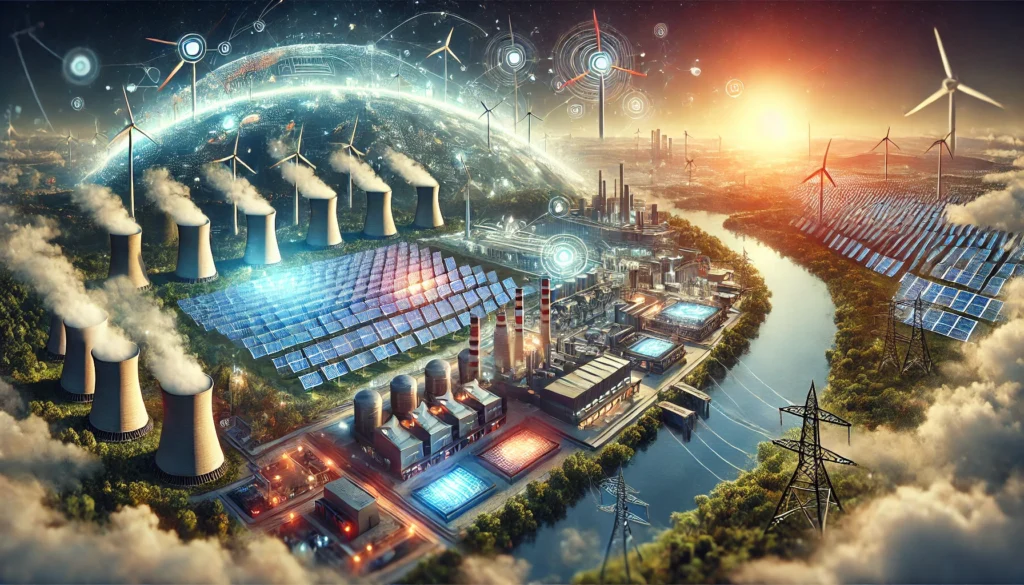As far as the power sector of India is concerned, which is the greatest corm emitter in the country, it needs at least seven hundred billion dollars in investment for deployment over the next decade, as anticipated by Moody’s ratings agency. The heavy investments in the power sector are necessary to decarbonize and balance the enhancement of the economy, which apparently depends on coal now.
Huge Investment Required in Decarbonization
As per the report released on February 19, how important the power sector is in India in transferring clean energy is, as it is responsible for accounting for 37% of the total carbon emissions for India. This investment span is for the many. Therefore, this huge amount will be needed in funding such work: renewable energy power projects, coal and nuclear power, transmission and distribution of electricity, and energy storage facilities.
Taking into consideration the net-zero needle planted by India, the investment for the power sector shall range between 1.5% and 2% of the GDP from 2026 to 2051, with a steady population increase if demand continues to keep flourishing. Owing to the position and prospects of its economy, such funding might look gigantic, but it certainly is within overall reach for support from the government and for the country.
The Growth of Indian Industry and Surge in Power Demand
The Indian economy is slated to grow at an annual rate of 6.5% on an average basis for the next decade, while electricity demand is expected to continue mounting at the rate of 6% annually compounded annually (CAGR) for the next decade.
Per capita consumption of electricity in India, as of FY-2022, stands at just 1,255 KWH, which is roughly one-third the global average. The demand for electricity is bound to surge with economic growth attributable to higher living standards. Thus, over the next many years, an addition of around 450 GW of renewable energy capacity is expected.
The report emphasizes that relying solely on the expansion of renewable energy will not suffice to fulfill India’s energy requirements. Coal power generation capacity is projected to grow by 35%, increasing from 218 GW to 295 GW by the year 2034-35. Although solar and wind energy are anticipated to lead in new capacity enhancements, Moody’s has forecasted modest contributions from nuclear and hydropower sources.
Investment Landscape and Key Financial Contributors
Moody’s estimates annual investments within India’s power sector will reach between ₹4.5 lakh crore to ₹6.4 lakh crore ($53 billion to $76 billion) until FY 2034-35, culminating in an approximate total of $700 billion over the next ten years. From FY 2026 to FY 2051, yearly investment levels are expected to range between ₹6 lakh crore and ₹9.5 lakh crore.
To realize these investments, a balanced approach involving both public and private funding sources as well as domestic and international capital will be essential. The report outlines several key points:
- Private sector involvement is crucial for facilitating India’s growth in renewable energy.
- State-owned enterprises will assume a more prominent role in infrastructure developments related to energy.
- Domestic and global debt markets are expected to play a significant role in refinancing active projects.
- Traditional banks, alongside non-banking financial institutions (NBFCs) are slated to be crucial channels for securing debt capital intended for new infrastructure initiatives.
Renewable Energy Development and Grid Enhancement
A comprehensive shift towards clean energy necessitates considerable investment into grid systems and storage facilities. According to Moody’s projections, India’s installed power generation capabilities could expand twofold or even up to 2.2 times by FY 2034-35 in response to increased demand levels. By this point, it is estimated that non-fossil fuel resources can account for approximately 45%–50% of overall electricity production, rising from just 23.5% during FY 2023–24.
While solar and wind technologies are set ahead of the curve concerning new capacity installations, advancement in nuclear or hydropower resources is likely limited within this timeline. Additionally, investments focused on battery storage technologies along with improved transmission frameworks will be imperative for ensuring grid reliability throughout India’s transition toward renewable forms of energy.
Conclusion
India’s power sector faces a monumental investment challenge to achieve a balance between economic growth and carbon neutrality. Moody’s highlights that this transition would succeed if the public and private sectors worked in a coherent mode, increased foreign investment, and reforms were made to help ensure this transition to net-zero in India. With all the above efforts that lie ahead, strong economic growth plus strategic financial planning will be central to achieving the clean energy goals of the country.
Source- PTI

